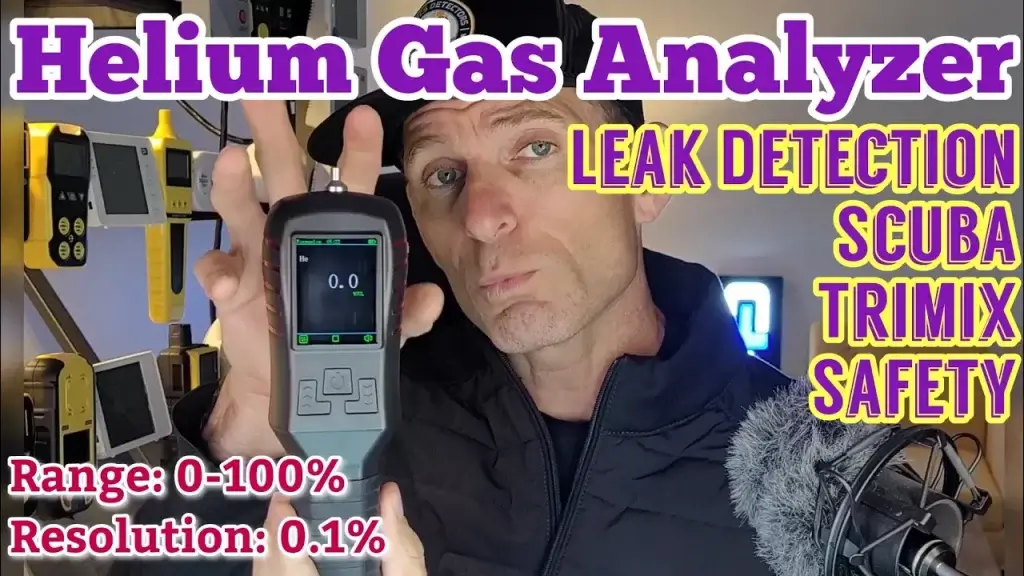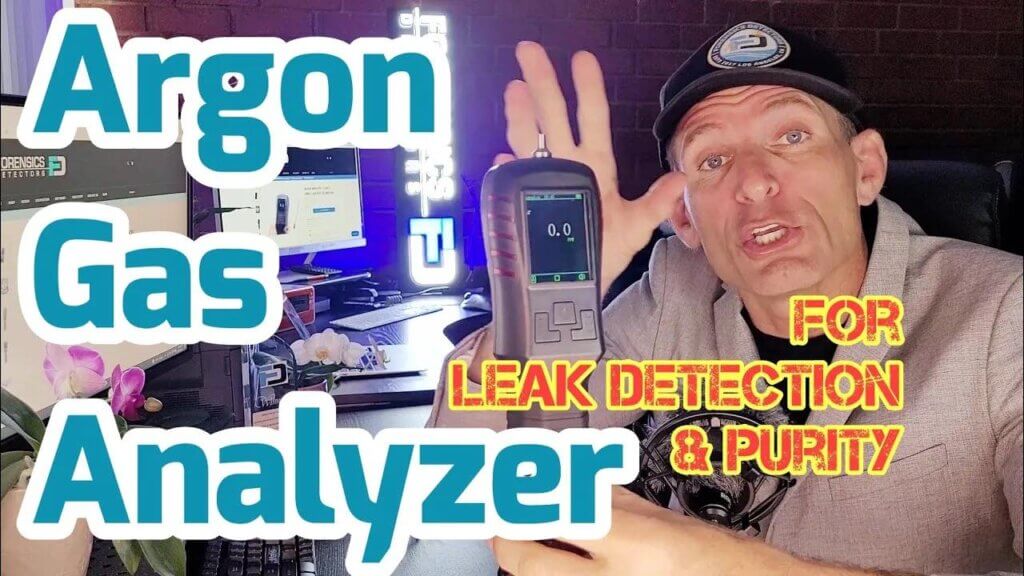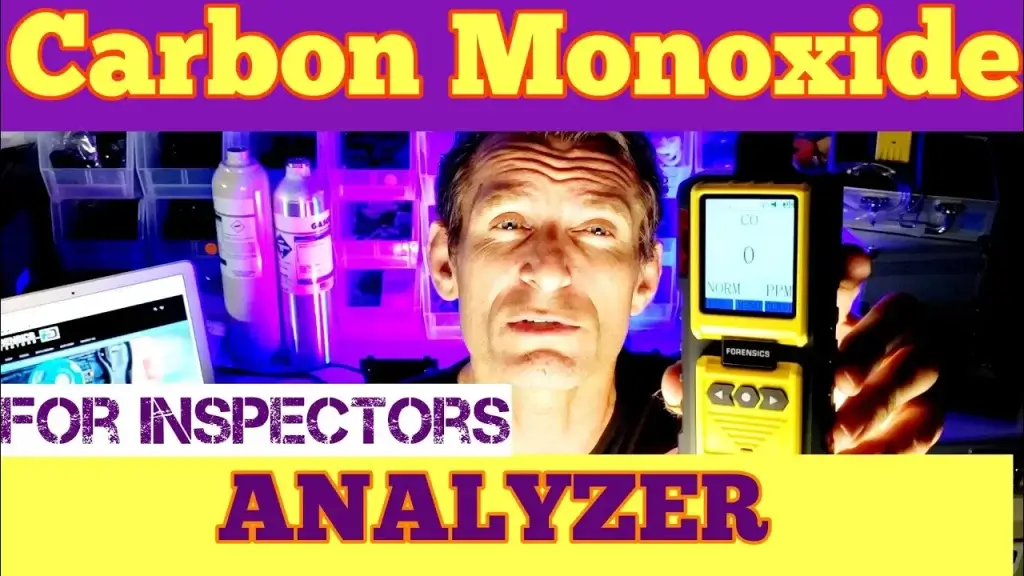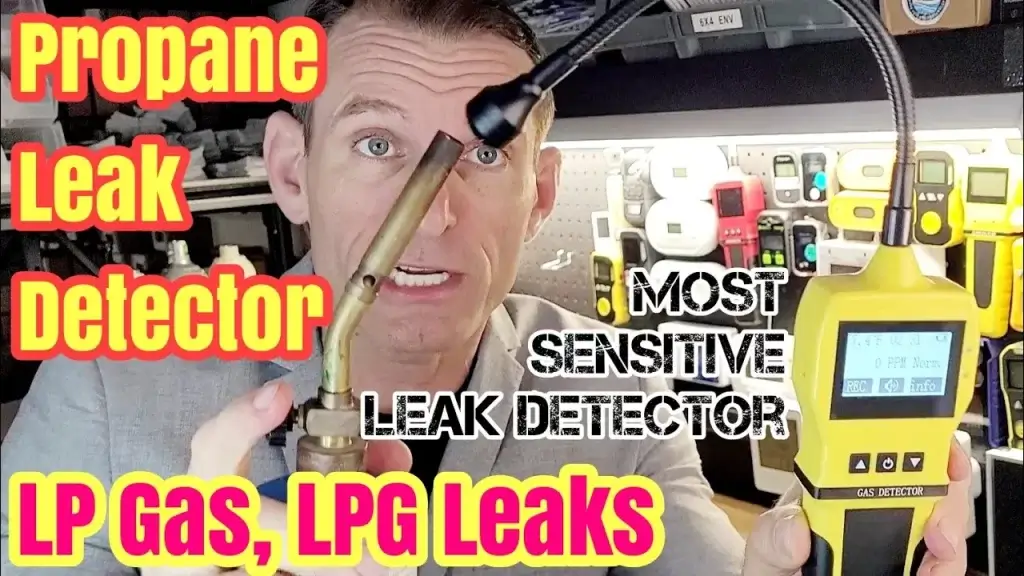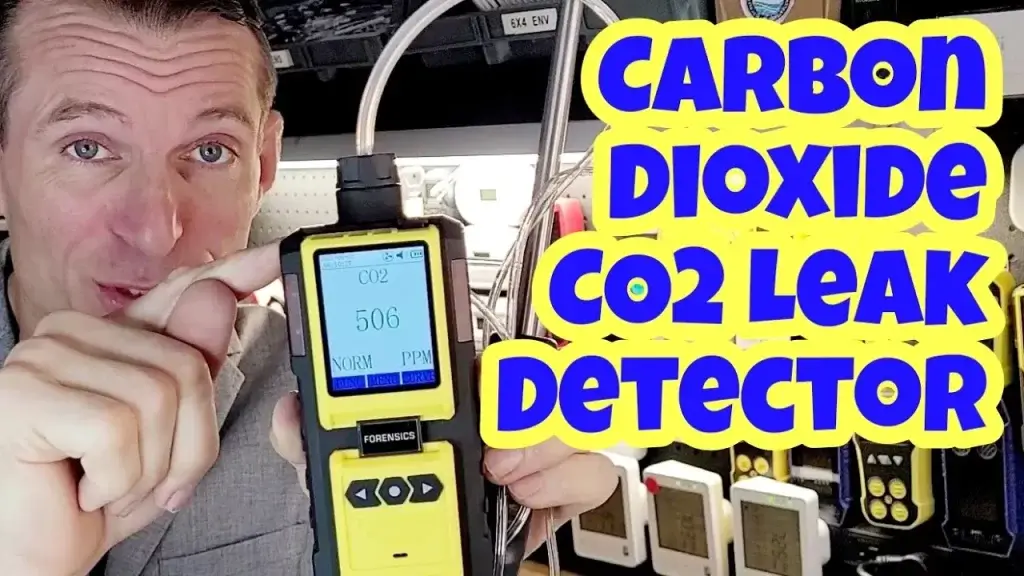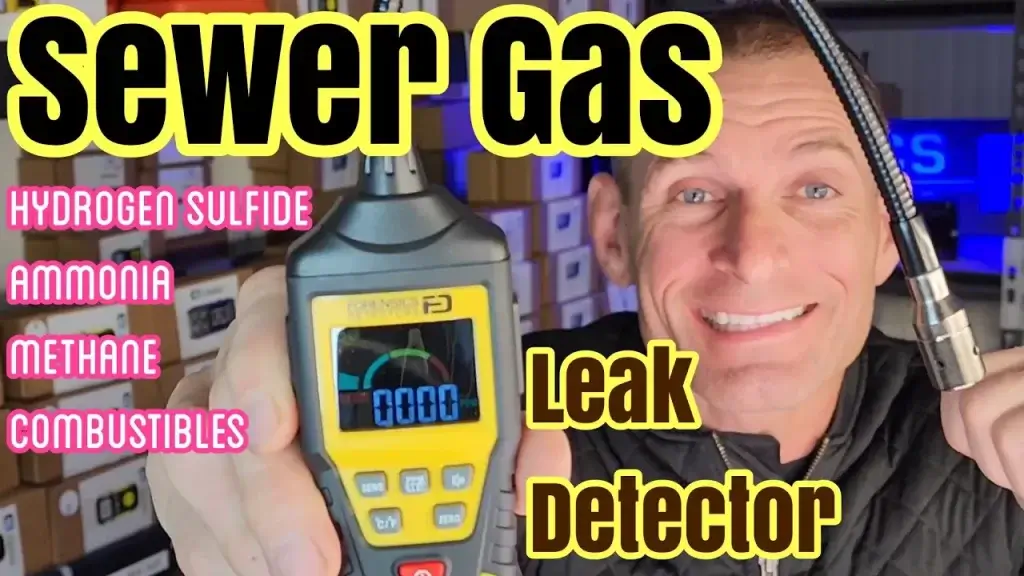Contents
- Best Oxygen Leak Detector
- What is an Oxygen Gas Leak Detector?
- What are Oxygen Leak Detector Applications?
- Oxygen Detectors for Applications?
- What types of Oxygen Leak Detectors exist?
- Why is Oxygen Gas so Important?
- CASE STUDY: Oxygen Detection for Welding
- How Do the Best Oxygen Gas Leak Detectors Work?
- Maintenance for Oxygen Gas Leak Detectors?
- What is an Oxygen Purge Gas Monitor?
- What are Safe Oxygen O2 Levels?
- Difference between Oxygen % and Oxygen ppm?
- How Do I Select an Oxygen Leak Detector?
- How Do I Use an Oxygen Leak Detector?
- Summary
- About Author
Best Oxygen Leak Detector
An oxygen leak detector is a device that is used to detect the presence or absence of oxygen gas where leaks may occur such as in a chamber, tank, vessel, or confined space. These analyzers are commonly used in industrial, laboratory, and manufacturing situations and when a nitrogen or carbon dioxide flush is occurring. The detector works by sensing the level of oxygen in the air and alerting the user if it detects a leak (higher or lower).
| ✅ Pros | ☢️ Cons |
| ✅ An oxygen leak detector is sometimes also referred to as a Nitrogen Leak Detector | ☢️ Oxygen Gas is dangerous as it can accumulate and become explosive |
| ✅ Oxygen Leak Detectors are used to track reduced oxygen levels to improve welding joints | ☢️ Nitrogen and CO2 Gas can displace oxygen in confined spaces and suffocate humans |
| ✅ An oxygen leak detector is sometimes also reffered to as a Nitrogen Leak Detector | ☢️ Nitrogen, CO2, Hydrogen, Helium, or Argon as used as tracer gases that reduce oxygen |
What is an Oxygen Gas Leak Detector?
An oxygen leak detector is a device that detects the presence of oxygen leaks in an environment, chamber, air, or confined space. These analyzers are frequently used in industrial settings where oxygen is used or stored in large quantities, such as hospitals, laboratories, and manufacturing facilities, or in situations where oxygen can be depleted or potentially displaced by gases like N2 or CO2. The detector works by sensing the oxygen level in the air and alerting the user if it detects a leak, whether it is higher or lower than the expected range.

What are Oxygen Leak Detector Applications?
- Aerospace industry: Oxygen leak detectors are used to identify leaks in spacecraft, aircraft, and other aerospace equipment that could lead to fires or explosions.
- Welding industry: Oxygen detectors are used to verify the absence of oxygen in inert welding environments, particularly in TIG or MIG welding processes. They accurately monitor oxygen levels while using inert gas to purge reactive metals like stainless steel and titanium.
- Healthcare industry: Oxygen leak detectors are employed in hospitals and other healthcare facilities to detect any leaks in oxygen delivery systems that may endanger patients.
- Manufacturing industry: Oxygen leak detectors are used in manufacturing plants that use oxygen in their production processes to ensure the safety of workers and prevent accidents.
- Mining industry: Oxygen leak detectors are utilized to identify any leaks in the oxygen supply systems that miners use to breathe.
- Modified Atmosphere Packaging: Oxygen leak detectors are used to confirm oxygen leakage in food headspace analysis. This application requires needle probes to obtain air samples, and a specific setup for headspace oxygen analysis is necessary.
Oxygen Detectors for Applications?
Some applications have unique requirements when it comes to oxygen detection. Each situation calls for special oxygen detector function specifications, measurements, and attributes. Examples include:
- Oxygen Detection for Scuba Gas Bottles
- Oxygen Detection for Oxygen Concentrators
- Oxygen Detection for Food Headspace Analysis
- Oxygen Detection for Breath Analysis
- Oxygen Detection for Welding Applications
- Oxygen Detection for Flue Gas (residential)
- Oxygen Detection in Workplaces
What types of Oxygen Leak Detectors exist?
There are several types of oxygen leak detectors that can be used for leak detection in different industries. Here are some examples:
- Portable oxygen analyzers: These are handheld devices that are used to measure the concentration of oxygen in the air. They are commonly used in industries such as welding, where oxygen leaks can pose a serious safety risk. Probes are also used to pinpoint gas samples for more accurate gas leak detection.
- In-line oxygen analyzers: These are installed in rooms industrial processes or other systems to continuously monitor the oxygen concentration. They are commonly used in industries such as food and beverage, where oxygen leaks can affect product quality.
- Trace oxygen analyzers: These are highly sensitive analyzers that are used to detect very low levels of oxygen in the air. They are commonly used in industries such as semiconductor manufacturing, where even small amounts of oxygen can damage the products being manufactured.
- Handheld gas detectors: These are versatile devices that can detect a variety of gases, including oxygen. They are commonly used in industries such as mining and oil and gas, where oxygen leaks can pose a serious safety risk.
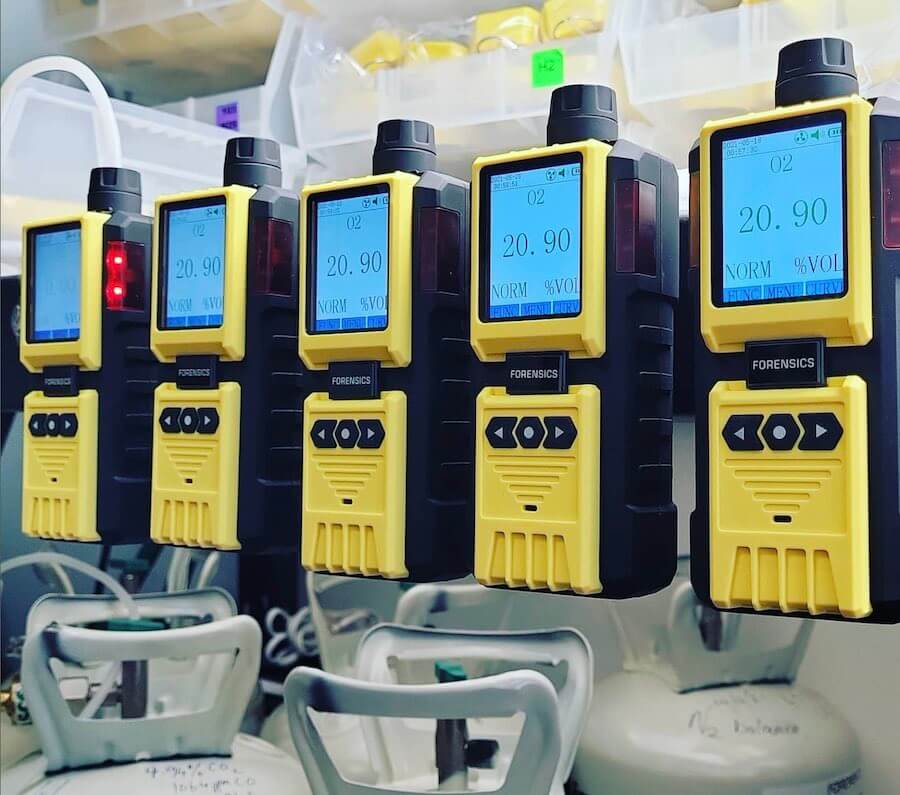
Why is Oxygen Gas so Important?
Oxygen is essential for sustaining life on Earth, as humans and animals require it to survive. Without oxygen, our planet would be lifeless. However, when oxygen levels decrease, oxygen deficiency can occur at a dangerous rate, leading to asphyxiation. Therefore, an oxygen detector is crucial to alert humans of decreasing oxygen levels.
Oxygen, represented by the chemical formula O2, makes up 20.9% of the air around us. Detecting oxygen levels is vital in our daily lives, as demonstrated by the following examples:
- Detecting oxygen levels in manufacturing processes is necessary to be aware of both enriched and depleted oxygen levels.
- Detecting oxygen levels in life support systems, such as those used in spacecraft, aircraft, submarines, and vet hospitals, is essential.
- Detecting oxygen levels in gas bottles used in scuba diving is important for safety.
- Detecting oxygen levels to support human and animal health is crucial.
- Detecting oxygen levels to confirm the absence or low levels of oxygen, including in welding, modified atmosphere packaging, or nitrogen flush purging processes, is necessary.
- Detecting oxygen levels in welding torches is important for safety and quality control.
CASE STUDY: Oxygen Detection for Welding
In order to achieve high-quality welds, it is essential to determine the appropriate shielding gas for any welding operation that prevents oxygen from making contact with metal weld material as the welding is being performed. To achieve this task, a shielding gas is emitted at the weld junction to reduce oxygen and eliminate it in the micro atmosphere as much as possible.
The choice of shielding gas depends on factors such as the type of metal being welded, the welding process used, and the desired weld characteristics. Preparing weld joints properly is also crucial for successful welding. But one thing in common is that oxygen must be reduced to as low as possible, and hence requiring an oxygen monitor when welding to confirm low oxygen is imperative, no matter what the shielding gas employed is.
To aid in the selection process, a table detailing common shielding gases and their applications is presented below:
| Shielding Gas | Application |
| Argon | TIG welding of non-ferrous metals, such as aluminum |
| Carbon Dioxide | MIG welding of carbon steel |
| Helium | TIG welding of stainless steel and other high-temperature alloys |
| Oxygen | MIG welding of carbon steel and stainless steel |
| Nitrogen | MIG welding of stainless steel and aluminum |
Using an oxygen purge analyzer is crucial in maintaining low levels of O2 during welding, which effectively reduces oxidation and oxide thickness. Various academic studies have demonstrated the relationship between welding oxygen content and resulting oxide thickness, indicating that high oxygen content can lead to thicker oxide layers, resulting in decreased corrosion resistance of welding samples and even cracking of specimens. In fact, studies have highlighted the importance of sensitive oxygen detection down to 100 ppm during welding. The correlation between oxygen content and oxidization can be visually observed in the image below, where darker welds indicate higher levels of oxidization.

Other benefits of using a portable trace oxygen analyzer include:
- Reduced time as there is no need to depend on time for purge estimates.
- Reduced gas consumption when purging. It is also easier to control the amount required.
- Ensured quality as welding can begin when oxygen depletion is complete, so no need to worry about welding too early.
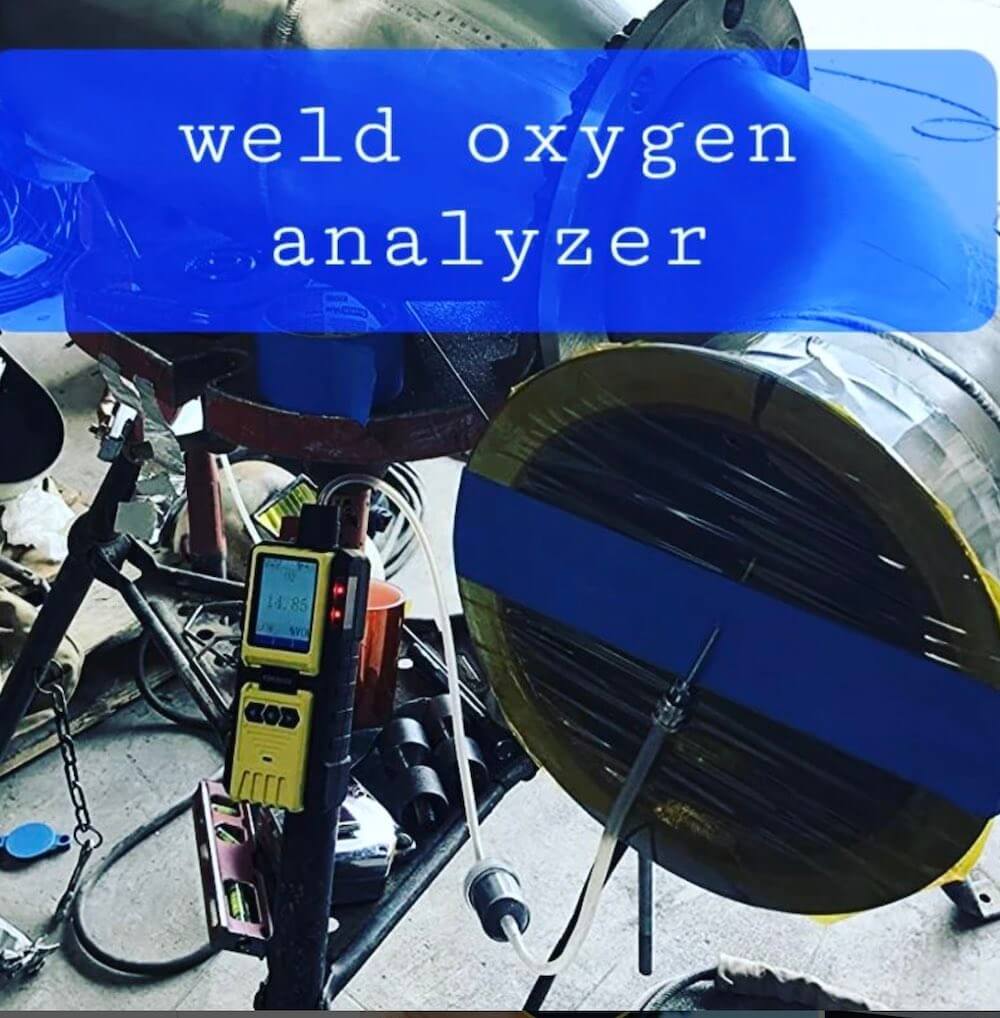
How Do the Best Oxygen Gas Leak Detectors Work?
An oxygen leak detector that uses an electrochemical oxygen sensor works by measuring the concentration of oxygen in the air through a chemical reaction. The electrochemical sensor contains a cathode and an anode that are separated by an electrolyte. When oxygen molecules come into contact with the cathode, they react with the electrolyte and generate an electrical current. The magnitude of this current is proportional to the concentration of oxygen in the air.
The detector measures this electrical current and converts it into a reading that displays the oxygen concentration. If the oxygen concentration in the air drops below a certain level, the detector will trigger an alarm to warn the user of the potential danger.
| 🦜 FUN FACT TIME 🦜 |
| Oxygen gas is that it is actually colorless, odorless, and tasteless. Despite being essential for human life and combustion, it cannot be seen, smelled, or tasted. |
Maintenance for Oxygen Gas Leak Detectors?
Testing and maintenance requirements for an oxygen gas leak detector are necessary to ensure its continued functionality and accuracy in detecting the presence of oxygen leaks. To effectively test and maintain an oxygen gas leak detector, the following requirements should be met:
- Regularly calibrate the detector to ensure accurate readings.
- Conduct routine inspections to check for any physical damages or signs of wear and tear.
- Follow manufacturer guidelines for cleaning and maintenance procedures.
- Implement safety precautions, such as wearing appropriate personal protective equipment and working in well-ventilated areas.
- Choose the right detector based on the specific needs of the application, considering factors such as sensitivity range, response time, and portability.
What is an Oxygen Purge Gas Monitor?
An oxygen purge gas monitor is also known as an oxygen leak detector and is needed by professionals who work in industries where welding, brazing, or soldering is performed. These industries include aerospace, automotive, shipbuilding, and oil and gas. Welding, brazing, or soldering processes require a controlled environment with low oxygen levels to prevent oxidation and ensure the quality of the weld. An oxygen purge gas monitor is used to detect and measure the oxygen levels in the environment to ensure they remain at safe and optimal levels. Without a monitor, it can be difficult to determine if the oxygen levels are within the safe range, which can lead to subpar weld quality, increased oxidation, and even safety hazards.

What are Safe Oxygen O2 Levels?
In welding, it is crucial to maintain low oxygen levels in confined workspaces, such as tubes or gas chambers. However, it is important to note that any leaks of inert gas or depletion of oxygen levels in the breathing environment can pose serious risks. Various government agencies have recommended oxygen gas limits, as shown below:
Occupational Safety and Health (OSHA) Air is considered oxygen-deficient below 19.5%
National Institute for Occupational Safety and Health (NIOSH) Air is considered oxygen-deficient below 19.5%
American Conference of Governmental Industrial Hygienists (ACGIH) <18% is the minimum partial pressure without the need for respiratory protection at normal atmospheric pressure.
Difference between Oxygen % and Oxygen ppm?
The conversion between oxygen % and oxygen ppm is linear and easy:
1% = 10,000ppm
0.1% = 1,000ppm
0.01% = 100ppm
PPM (parts per million) measurements are a critical component of oxygen purge monitoring in welding environments. PPM or low % measurements are used to determine the concentration of oxygen in the welding environment, which is essential in maintaining low oxygen levels. In welding, high oxygen levels can lead to oxidation and poor weld quality. PPM measurements are used to detect any changes in oxygen concentration, which can indicate the presence of leaks or other issues. Understanding PPM measurements is crucial in ensuring accurate readings and maintaining safe oxygen levels. Oxygen purge monitors with PPM measurement capabilities are essential tools in welding environments, and proper training is necessary to interpret and use PPM measurements effectively.
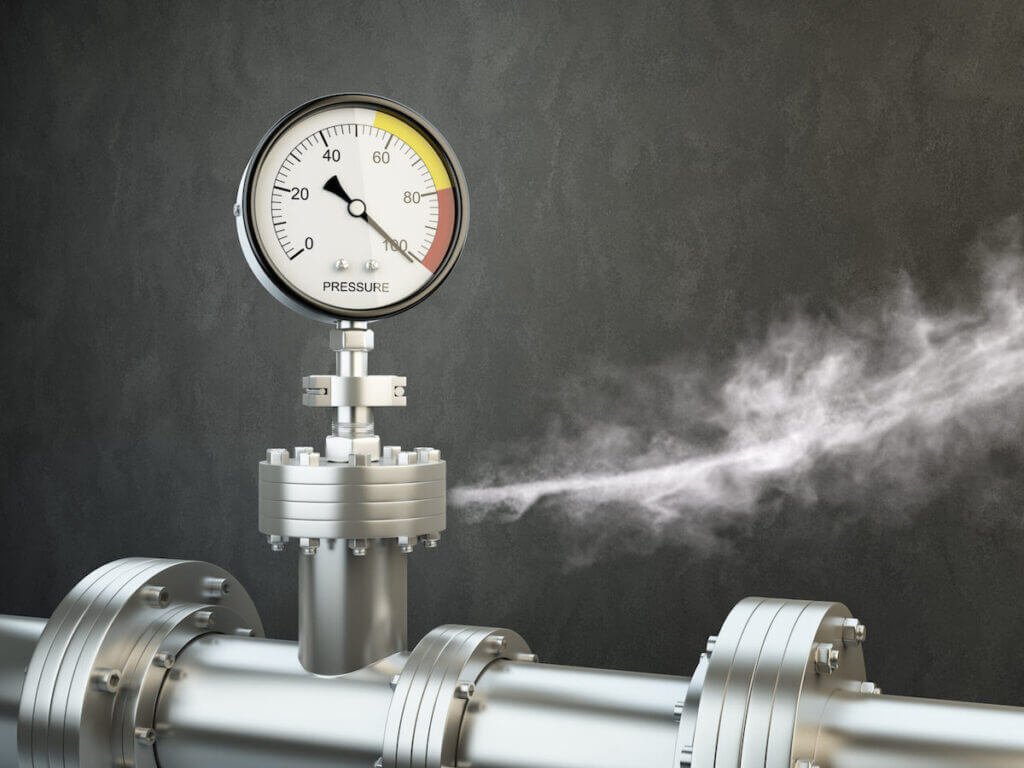
How Do I Select an Oxygen Leak Detector?
When choosing an oxygen leak detector, there are several key questions to consider.
Firstly, it is important to determine if the analyzer has a pump, as handheld aspirators can create variable pressure and affect sensor readings. Electronic micro pumps are a must for oxygen leak detectors since the modality of operation is continuous for sensitive and accurate readings.
Secondly, consider the required detection level for O2, as this will determine the necessary resolution and sensor type. For low levels of O2, a 1 ppm oxygen analyzer with zirconia sensors may be required. However from our experience, for most of the work, 0.01% (or 100ppm) minimum detection is satisfactory.
Thirdly, consider the necessary accessories, which typically include tubing, filters, a carry case, and a stainless steel probe form factor.
Additionally, budget is an important factor, with electrochemical sensors sensitive to 100 ppm costing less than $500, while zirconia-based sensors (1 ppm) can cost over $3000.
Finally, ensure the unit is calibrated with NIST traceable sources and has a calibration certificate with all relevant technical details.
How Do I Use an Oxygen Leak Detector?
To ensure accurate readings and proper use of an oxygen analyzer, follow these steps:
- Confirm that the oxygen analyzer has been bump-tested and validated as operational.
- Turn on the analyzer and allow it to stabilize for at least 60 seconds (this may take longer for zirconia-based sensors).
- Check all tube connections, including the filter and barbs, to ensure there are no vacuum leaks that could introduce oxygen and affect readings.
- Place the probe at the sample location and ensure the pump is running.
- Observe the O2 values decreasing as the inert gas displaces oxygen.
- Make necessary flow adjustments to the inert gas to maintain low oxygen levels while avoiding waste.
- Once finished, allow the analyzer to draw fresh air and return to 20.90.
- Turn off the analyzer and store it properly.
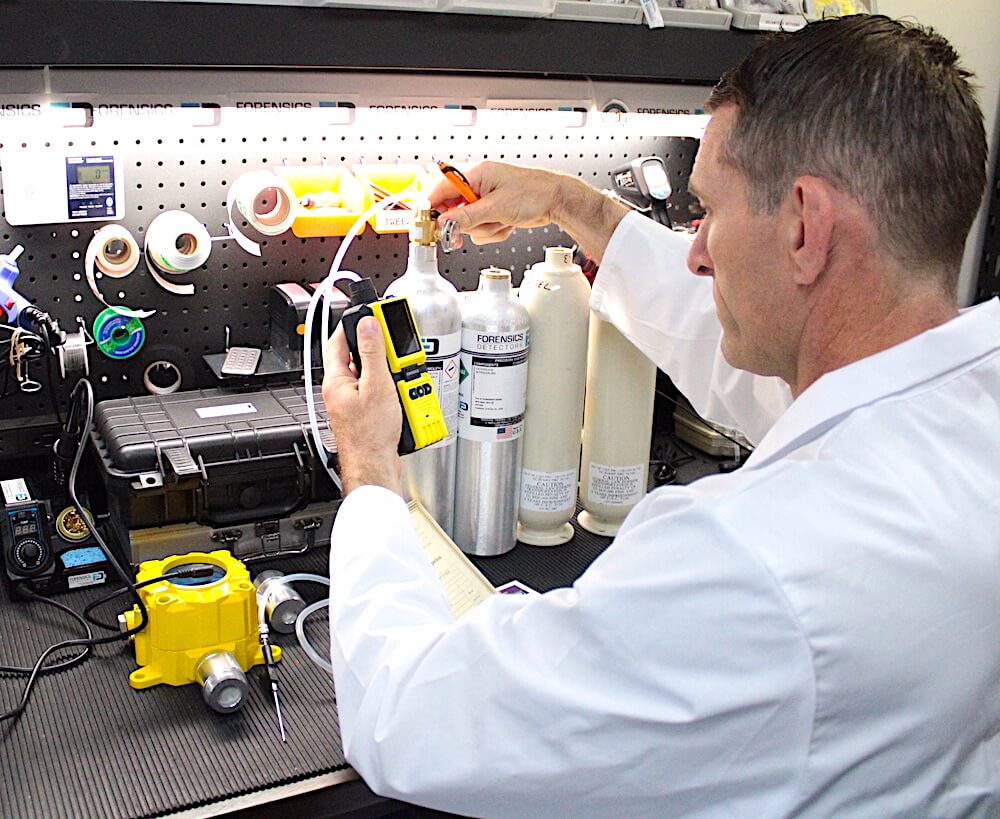
Summary
- An oxygen leak detector is a device that detects the presence of oxygen leaks in a system or environment.
- It is commonly used in industries where the presence of oxygen is critical and leaks can be dangerous, such as aerospace, healthcare, and manufacturing.
- Oxygen leak detectors typically have audible and visual alarms to alert the user of a leak.
- They are essential for ensuring the safety of workers and preventing accidents in environments where oxygen is used or stored.
- Regular maintenance and calibration of oxygen leak detectors are crucial to ensure their accuracy and reliability.
About Author
Dr. Koz resides in the Palos Verdes Peninsula in Los Angeles, California. He is a subject matter expert on gas leak detectors, gas sensor technology, gas detectors, gas meters, and gas analyzers. He has been designing, building, manufacturing, and testing toxic gas detection systems for over 20 years. Every day is a blessing for Dr. Koz. He loves to help customers solve their unique problems.
Email: drkoz@gasleakdetector.com
Phone: +1 424-341-3886


